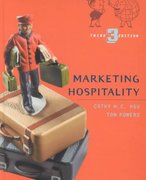Question
Scenario 1: The evolution of tire manufacturing and tire availability in India could roughly be broken down into two specific phases. In the initial phase,
Scenario 1: The evolution of tire manufacturing and tire availability in India could roughly be broken down into two specific phases. In the initial phase, dating back to 1936, tire manufacturing, initiated by Dunlop, a multinational company, was dominated by Dunlop and Firestone. Good Year and India Tire and Rubber (ITR) were two additional tire trading companies. This concentration of production led to uniformly high prices across India, regardless of the geographical differences associated with supplying different parts of the country. As demand grew, the Indian government chose to license new competitors instead of allowing existing ones to grow, to introduce competition in the Indian market. This did not result in the increased level of competition expected. The government subsequently allowed existing providers to expand. Post-1990, after the Indian government liberalized the market by reducing tariff and non-tariff barriers to allow more foreign competition, there was an unprecedented increase in the importation of foreign tires. There were also tire exports too, but mainly to less developed and less demanding foreign markets. By 2014-15, there were 39 companies in the Automotive Tire Manufacturers' Association (ATMA) in India. However, only a handful of them had a significant market share. Despite the increase in competition, and reduction in costs of rubber, these costs were not being passed on to consumers. As intermediaries between manufacturers and consumers, the All India Tire Dealers Federation (AITDF) engaged the Ministry of Corporate Affairs in November 2013 to charge the five major tire manufacturers of collusion and engaging in price parallelism (price-fixing). This issue pitted the AITDF against the ATMA.
Please answer the questions below:
1. What roles of government are evident in the attention paid to the tire industry?
2. What types of regulation are evident in the case?
3. Which interests are the government protecting, through regulation?
4. Should the government get involved in the tire business or in business in general? What is your opinion and why?
5. Should other stakeholders involve themselves in this situation? Please discuss.
Scenario 2: In October 2017, the Competition Bureau confirm that it was investigating price-fixing of bread products and raided the offices of several grocery stores, including Loblaw, which had alerted the Bureau to the practice in 2015. It was alleged that the price of bread had been coordinated amongst the bakeries and retail stores.
The Bureau states that price-fixing conspiracies are difficult to detect and prove. Penalties for price-fixing include fines up to $25 million, imprisonment to a maximum term of 14 years, or both. (Source: "Price-fixing," Competition Bureau Canada athttps://www.competitionbureau.gc.ca/eic/site/cb-bc.nsf/eng/h_00112.html).
The possible price-fixing disclosure and investigation began in 2015. Loblaw and Weston Foods revealed their involvement in the price-fixing arrangement from 2001 to 2015 to the Competition Bureau. They had been cooperating with the Bureau since discovering the anti-competitive behaviour in March 2015. In January 2016, the Canadian Federation of Independent Grocers contacted the Competition Bureau about the possibility of price-fixing in the industry. The matter was being fully investigated but under competition legislation, the companies were required to keep their cooperation confidential. Loblaw and George Weston had been granted immunity from criminal prosecution because they voluntarily disclosed the possible price-fixing arrangement.
Between 2002 and 2014, bread prices increased an average of 5.25 percent per year while the food inflation rate averaged 2.57 percent. Canada Bread Co. Ltd. and Weston Foods produced 8- percent of packaged bread in Canada, making the possibility of cartel arrangements easier. Besides Loblaw, the other retailers alleged to be involved were Walmart Canada, Sobeys Inc., Metro Inc., and Giant Tiger Stores.
In a media release on December 19, 2017, entitled "George Weston and Loblaw take action to address industry-wide anti-competitive activity" Loblaw and George Weston outlined the issue, the action they had taken to address it and admitted that it should never had occurred. As a result of internal investigations, the employees involved were no longer with the companies. An enhanced compliance program had been implemented. A new independent compliance office led by a Chief Compliance Officer was established to ensure competition law compliance. All sales and marketing personnel, store managers, and senior management at Weston Bakeries, George Weston, and Loblaw had undergone intensive compliance re-training with continuing updates and monitoring taking place. Also, the companies committed to an ISO 19600 competition compliance program certification to provide independent third-party validation. Loblaw also announced that it was offering customers a $25 Loblaw Card. This goodwill gesture was not requested by the Competition Bureau.
Please answer the questions below:
1. How did Loblaw attempt to influence civil society stakeholders? Do you think their approaches were socially responsible? Please explain. 2. How should journalists use media releases? 3. Why should business leaders worry about media as a stakeholder? Please describe the influence of the media.
4. Is this an example of "libel chill"? Why or why not?
5. Should other stakeholders participate in this situation? Please discuss.
Step by Step Solution
There are 3 Steps involved in it
Step: 1

Get Instant Access to Expert-Tailored Solutions
See step-by-step solutions with expert insights and AI powered tools for academic success
Step: 2

Step: 3

Ace Your Homework with AI
Get the answers you need in no time with our AI-driven, step-by-step assistance
Get Started


